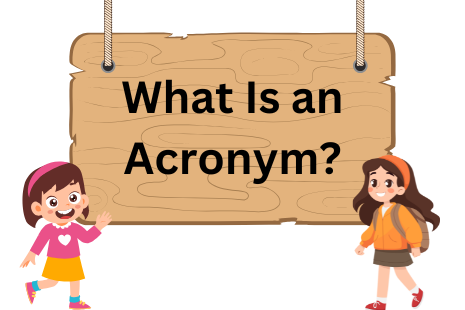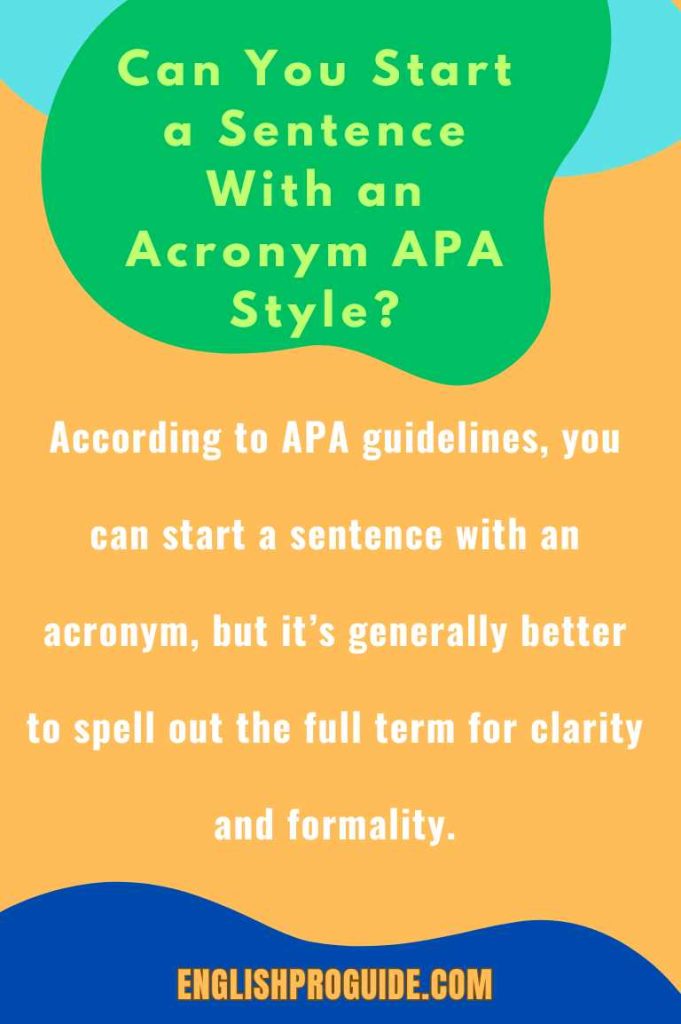Can You Start a Sentence With an Acronym? Let’s Start
If you’ve ever wondered, “Can you start a sentence with an acronym?”, you’re not alone.
Acronyms are everywhere in modern English, from everyday conversations to academic writing. But when it comes to starting sentences with them, especially in formal settings like APA style, there are some important rules to keep in mind.
This post will guide you through when and how to start a sentence with an acronym, and we’ll include practical examples to help you understand.
What Is an Acronym?

Before diving in, let’s clarify: An acronym is a word formed from the initial letters of a phrase. For example:
- NASA: National Aeronautics and Space Administration
- ASAP: As Soon As Possible
- APA: American Psychological Association
Acronyms are often used to make long or frequently repeated terms shorter and easier to remember.
Can You Start a Sentence With an Acronym?
Yes, you can start a sentence with an acronym, Make sure your audience knows what the acronym means. Example: NASA launched its latest satellite this morning.
- Clarity Is Key
Make sure your audience knows what the acronym means. For example:- NASA launched its latest satellite this morning.
If your reader isn’t familiar with “NASA,” you should spell it out the first time it’s mentioned.
- NASA launched its latest satellite this morning.
- Consistency Matters
In formal writing, such as APA style, always spell out the full phrase before using the acronym if it’s the first time it appears. - Capitalization
Starting a sentence with an acronym is fine because acronyms are usually written in uppercase letters.
Can You Start a Sentence With an Acronym APA Style?

According to APA guidelines, you can start a sentence with an acronym, but it’s generally better to spell out the full term for clarity and formality.
For example:
- Incorrect: APA requires clear formatting in papers.
- Correct: The American Psychological Association (APA) requires clear formatting in papers.
However, if the acronym has already been defined earlier in the text, it’s acceptable to start a sentence with it later.
Read More: 70+ Idea How can you start a sentence with the word “This”
When to Avoid Starting a Sentence With an Acronym
- When It’s Unfamiliar: If your audience might not recognize the acronym, spell it out first.
- For Readability: Too many acronyms can make text confusing or hard to follow.
- In Formal Writing: APA style often prefers full terms at the beginning of a sentence.
Tips for Using Acronyms in Writing
- Define the Acronym First
Always introduce the full term before using the acronym:- Example: “The World Health Organization (WHO) announced new guidelines.”
- Use Sparingly
Avoid overloading your writing with acronyms, especially if they’re not common. - Stay Consistent
Once you’ve defined an acronym, stick to it throughout the piece to avoid confusion.
Challenge: Try Writing Your Own Sentences!
Practice makes perfect. Here’s a challenge for you: Write five sentences starting with an acronym. For example:
- WHO announced new global health goals this year.
Share your sentences in the comments below and let’s see how creative you can get!
Read More: Can You Start A Sentence With The Word If? With 100 Examples
FAQ About Acronym
Can you start a sentence with an acronym in casual writing?
Yes, it’s perfectly fine in informal settings, especially if the acronym is widely recognized.
Is it acceptable in academic writing?
Yes, but APA guidelines recommend spelling out the full term first for clarity.
Conclusion
So, can you start a sentence with an acronym? Absolutely, as long as you follow some basic rules for clarity and style.
Whether you’re writing a casual email or a formal APA paper, understanding how to use acronyms effectively will make your writing clearer and more professional.
What acronyms do you use most often? Let us know in the comments!






